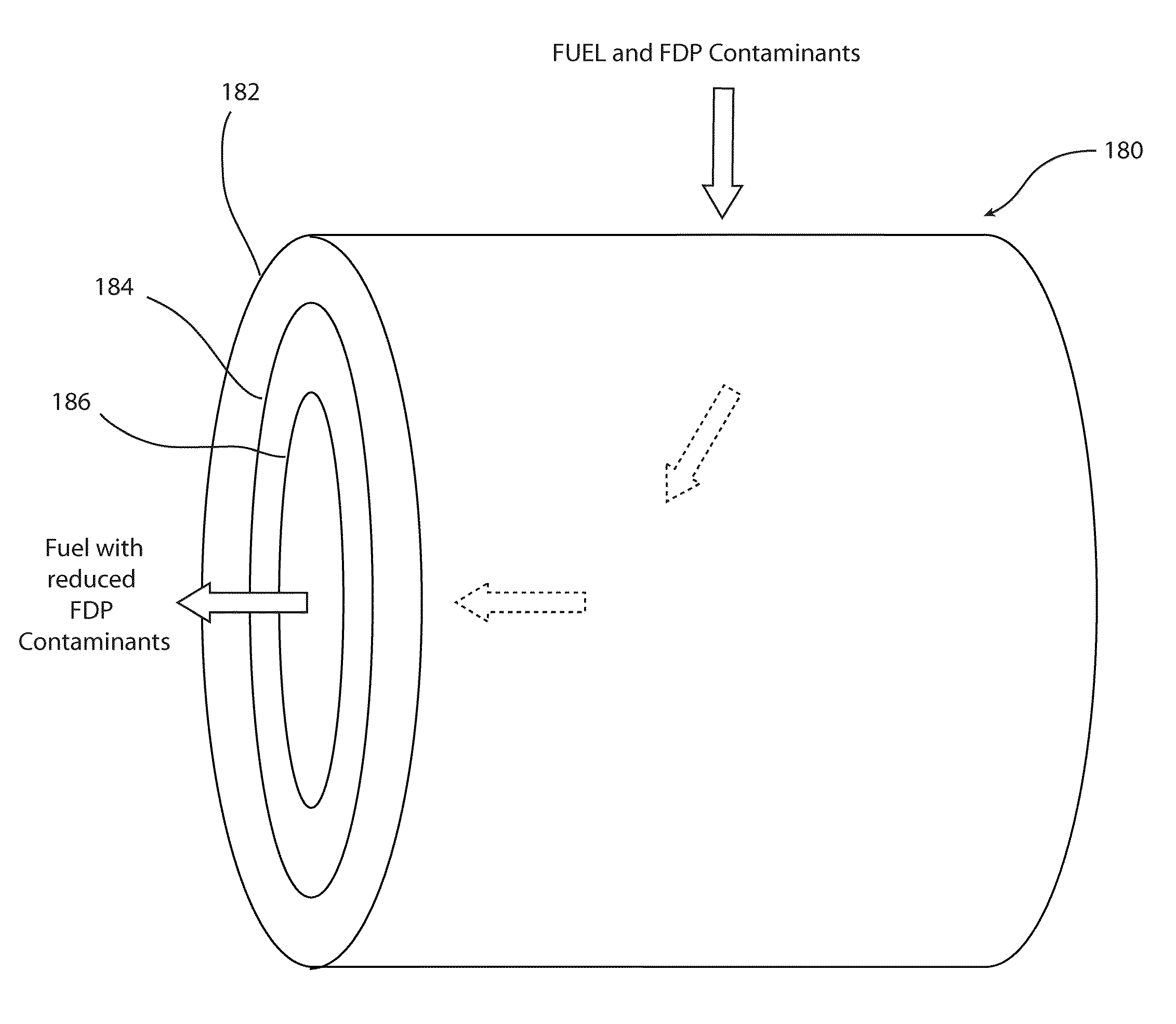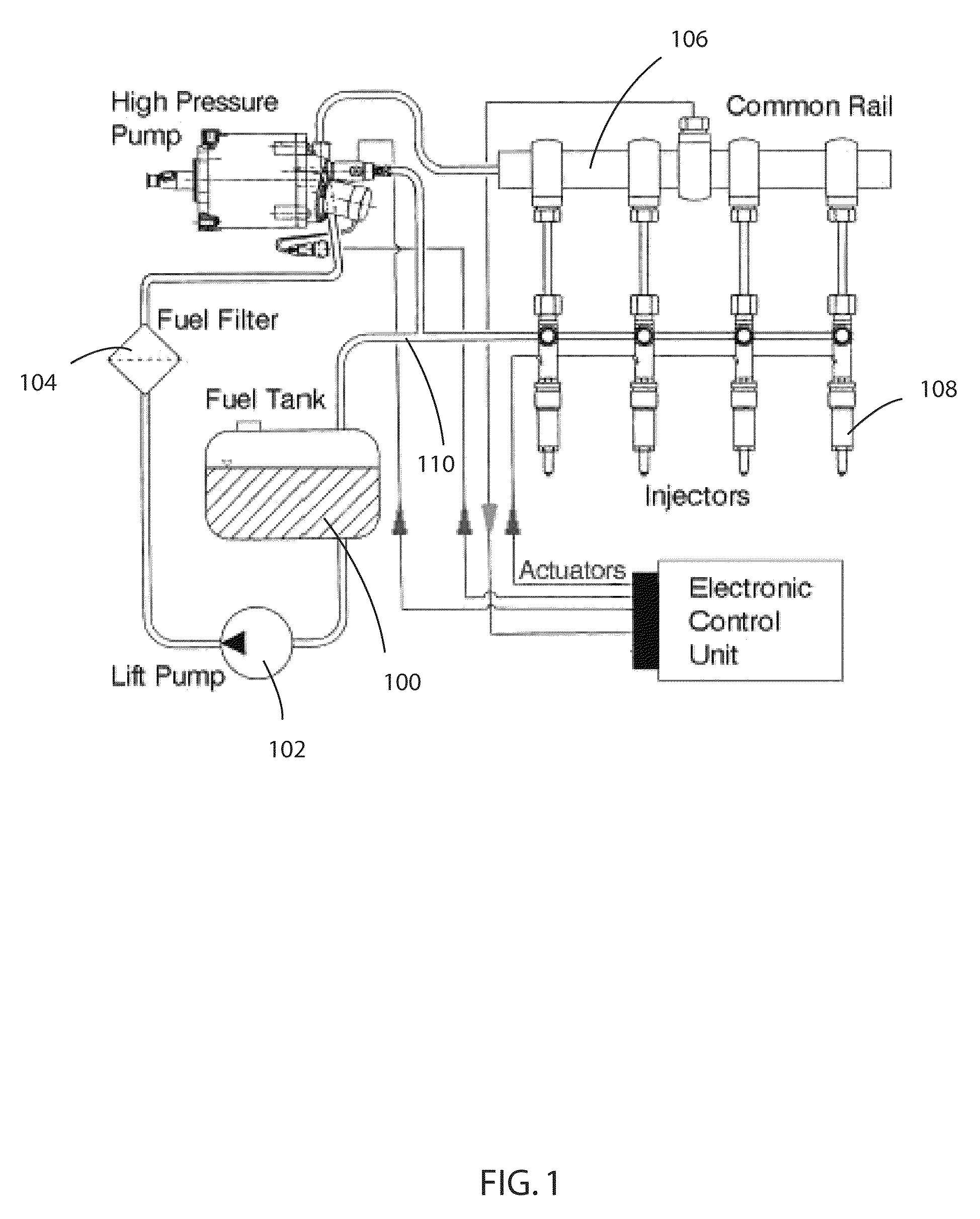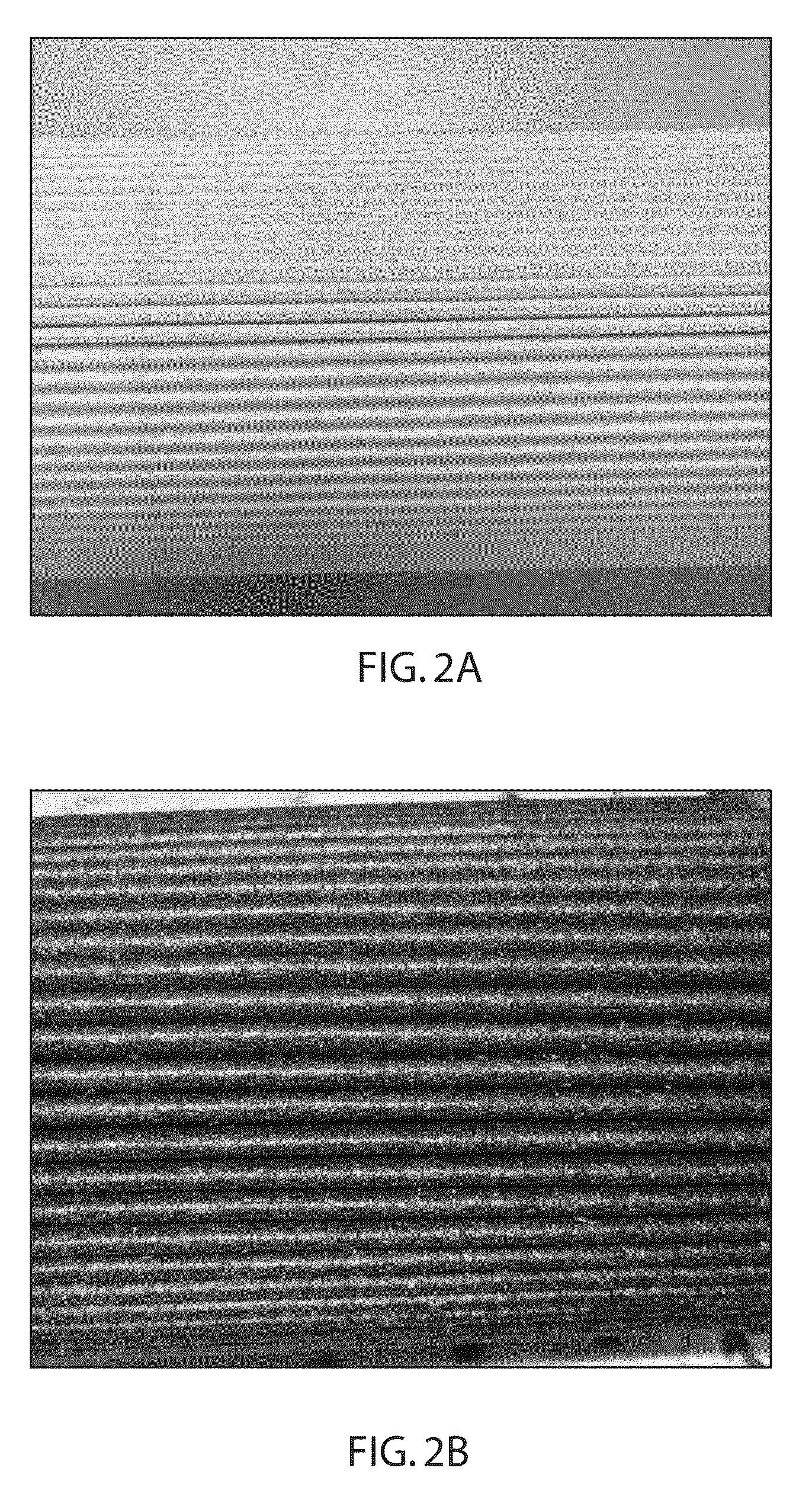Liquid filtration media, filter elements and methods
a technology of filter media and liquid fuel, which is applied in the direction of fuels, filtration separation, and separation processes, etc., can solve the problems of unacceptable particle levels passing through the filter media, damage to the engine, and detrimental to engine performance, so as to improve handling, controllable pore size, and improve the effect of permeability and efficiency
- Summary
- Abstract
- Description
- Claims
- Application Information
AI Technical Summary
Benefits of technology
Problems solved by technology
Method used
Image
Examples
Embodiment Construction
[0044]The present invention is directed in part to filter media and filter elements for the removal of contaminant material from a liquid fuel stream. The filter elements and media are configured for removal of additional contaminants besides hard particles, these additional contaminants including (for example) waxes, asphaltenes, sterol glucosides, sterol glucosides, sterol glycosides, and fuel degradation products—collectively referred to as fuel contamination products. The filter elements and media allow for improved filter performance and longevity.
[0045]Although existing fuel filtration media, such as melt blown media, can perform adequately in removing particulate contaminants from liquid fuels, the melt blown media can prematurely foul by buildup of contaminants other than traditional particulates. This premature fouling appears to be particularly pronounced in situations where fuel undergoes repeated heating and cooling cycles, such as in common rail systems used on many die...
PUM
| Property | Measurement | Unit |
|---|---|---|
| diameter | aaaaa | aaaaa |
| mean flow pore size | aaaaa | aaaaa |
| pore size | aaaaa | aaaaa |
Abstract
Description
Claims
Application Information
 Login to View More
Login to View More - R&D
- Intellectual Property
- Life Sciences
- Materials
- Tech Scout
- Unparalleled Data Quality
- Higher Quality Content
- 60% Fewer Hallucinations
Browse by: Latest US Patents, China's latest patents, Technical Efficacy Thesaurus, Application Domain, Technology Topic, Popular Technical Reports.
© 2025 PatSnap. All rights reserved.Legal|Privacy policy|Modern Slavery Act Transparency Statement|Sitemap|About US| Contact US: help@patsnap.com



